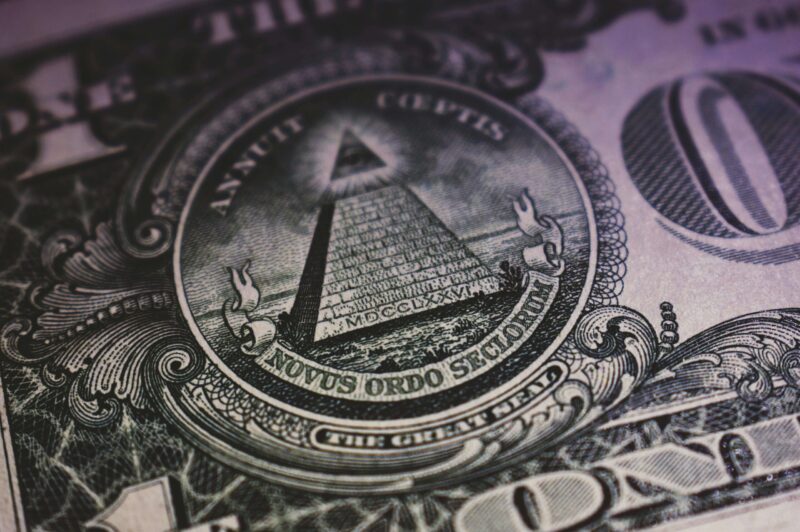Exam Tips
AP US History Crash Course on Dollar Diplomacy

Dollar Diplomacy, as a term, may evoke different thoughts. It may remind you of spy novels, movies, or something from the legal field. However, this policy is a vital part of history that affected not only the U.S. but also other countries worldwide.
Any AP test, ACT, or SAT exam requires preparation. Yet, the prep process will be different for each of them. When it comes to APUSH, you don’t have to spend time memorizing important historical dates and terms. Instead, you have to understand important historical events and concepts and their consequences. The same goes for Dollar Diplomacy.
In this guide, we’ll cover the definition of Dollar Diplomacy, the key players involved, and the reasons why this policy emerged. By the end of the article, you’ll be ready to tackle any question related to this topic on the exam.
The Rise of American Power
The late 19th and early 20th centuries witnessed a giant rise in American economic and military power. The nation’s industrial boom and expanding global trade interests led to a desire for increased influence, especially in its own backyard – Latin America and the Caribbean.
?Back then, another important thing happened that contributed to the rise of American power – the Monroe Doctrine. It was a foreign policy issued in 1823 that aimed to prevent further European colonization or intervention in the Western Hemisphere. Monroe Doctrine has also meant absolute American dominance in the Americas.
Yet, with such a rise of power, the U.S. itself was looking for other forms of colonization. President Theodore Roosevelt’s Big Stick policy, which he embodied in the words “Speak softly, and carry a big stick,’’ helped to set the stage for Dollar Diplomacy.
?Big Stick is the policy of carefully mediated negotiation (“speaking softly”) supported by the unspoken threat of a powerful military (“big stick”). Roosevelt’s foreign policy expanded control over the Western Hemisphere and laid the foundation for Dollar Diplomacy in multiple ways, including establishing superiority over other nations.
What Is Dollar Diplomacy?
Now, let’s get to the most important part of our Dollar Diplomacy APUSH crash course. What was Dollar Diplomacy itself?
?Dollar Diplomacy was an American foreign policy introduced by U.S. President William Howard Taft and his Secretary of State Philander C. Knox. What was its aim?
- To maintain the economic stability of the region.
- To safeguard and expand American commercial and financial interests there.
It is important to understand that the stage was already set for Taft during Theodore Roosevelt’s presidency (we already mentioned his intentions).
It was under President Theodore Roosevelt’s administration when the American peaceful involvement in the Dominican Republic’s affairs happened. In particular, the United States provided loans to the Dominican Republic in exchange for the authority to appoint the head of customs, which was crucial for the country’s revenue.
But the Dollar Diplomacy term itself appeared later on. Taft’s critics in the U.S. Senate created the term “dollar diplomacy” to describe his approach to using money to influence foreign markets and governments.
His policies heavily relied on America’s financial power and had a significant impact on countries with weaker economies. Taft aimed to increase U.S. influence in various nations. Here’s his famous quote:
Taft’s rivals felt he let big investors call the shots. They would directly say that he did not respect the sovereignty of other countries in the region. However, Taft believed that American money could help stabilize governments in the Caribbean, ignoring that his opponents saw the policy as unfair and pushy.
Economic Instead of Military Force Approach
Importantly, William Howard Taft served as the Secretary of War under President Roosevelt from 1904 to 1908. Yet, his approach to foreign affairs was different from Roosevelt’s.
Instead of relying on military strength, he used economic power. Taft characterized his program as “substituting dollars for bullets.” His main focus was on two regions:
- Central America, where several countries owed a lot to European countries;
- Asia, where Taft wanted to help China resist the rise of Japan.
In other words, Taft’s idea was to boost American business influence to weaken other nations’ control. Despite the fact that Chinese officials had an Open Door policy favoring free trade to prevent dominance by any single nation, Taft believed Japan and Russia had too much control.
So, he collaborated with Britain, France, and Germany to invest in a huge Chinese railway project. However, it failed due to various reasons, including competition with Japan and Russia.
In addition to Asia, Taft aimed to expand the influence of the U.S. in Latin America and parts of Africa. He invested in countries like Haiti, Liberia, and the Dominican Republic, hoping to spur reforms or improve relations. However, these efforts often backfired. Many nations felt the U.S. was overstepping its boundaries, which caused tension rather than peace.
What Happened in Nicaragua?
Despite the claims to replace bullets with dollars, Taft was ready to act when the so-called strategic situation required a rough step. He did believe in the significance of peaceful ways to handle issues. Yet, if a Central American country didn’t agree with Dollar Diplomacy, he didn’t hesitate to use the military.
When rebels in Nicaragua tried to overthrow President Adolfo Díaz, who was friendly to the U.S., Taft sent warships with 2,000 marines to stop them. The forces stopped the rebellion and kicked the leaders out of the country. Some marines stayed in Nicaragua until 1925 to help keep the government stable.
Dollar Diplomacy in Mexico
In 1912, Mexico wanted to let Japanese companies buy land in Baja California, including Magdalena Bay. Taft worried the Japanese might turn it into a naval base and refused to do that. After that, Senator Henry Cabot Lodge proposed an extension to the Monroe Doctrine called the Lodge Corollary. It said the U.S. wouldn’t let any foreign government or business get land in the Western hemisphere and control it. After that, Mexico changed its mind about letting Japan buy the land.
Why Dollar Diplomacy Failed?
In Central America, the countries didn’t get any significant help with their debts, as the American foreign policy promised. Instead, it mostly shifted that debt to the United States while keeping the financial instability of those nations. This made some people angry and sparked movements against the interference. In the end, the initiative led to more conflicts and US-supported takeovers in the region, especially during the Cold War when the U.S. wanted to stop communism.
US Relationships With Asia
Another important part of this story is American relations with Asia. The Dollar Diplomacy made global political powers suspicious of the U.S. Particularly, Russia and Japan thought the U.S. participation in China’s affairs was just a way to control the country. The efforts to sort out issues between China and Japan made things worse between them and the U.S.
Also, Dollar Diplomacy didn’t manage to keep things balanced, and Japan started taking over more places that they viewed as their area – in Southeast Asia. All these events, in a way, also contributed to World War II (though, of course, it was one of the less significant factors that led to the conflict).
Other Factors That Defined the Failure
What were the other reasons for Dollar Diplomacy to fail?
- Dollar Diplomacy often felt like economic imperialism.
- Countries receiving loans felt controlled and saw their sovereignty undermined, which led to resentment and the rise of nationalist movements against American influence.
- The policy focused solely on economic interests, neglecting complex political and social issues within the intervened countries.
- The American public grew increasingly critical of the interventionist policy and the negative image associated with it.
- Bigger geopolitical dynamics beyond the US also contributed to the failure. Shifting global powers and new ideologies (e.g., communism) also played big roles in the whole process.
What Happened After That?
Woodrow Wilson, who succeeded Taft as president, shifted the focus, turning to moral diplomacy and trying to keep the U.S. out of other countries’ affairs. Wilson wanted to prioritize the stability inside the U.S. borders. His partially isolationist approach, which was a response to the “big stick” and Dollar Diplomacy, made the U.S. take longer to join World War I.
With that said, Wilson’s approach wasn’t purely isolationist. His significant role in the establishment of the League of Nations proves it. Wilson proposed the idea of the League as part of his plan for peace after World War I (aka Fourteen Points). Basically, he was a key advocate for the League of Nations formation.
Conclusion
The actions of the U.S. government during the Dollar Diplomacy course were all about acquiring more control and influencing other political powers and nations. While you don’t need to know exact dates and definitions to pass APUSH, understanding the major concepts like Dollar Diplomacy is crucial to succeeding in your AP US History exam. We hope this guide has helped you comprehend those events better. If you need any personalized guidance, remember you can always choose to study with a tutor. Good luck!




